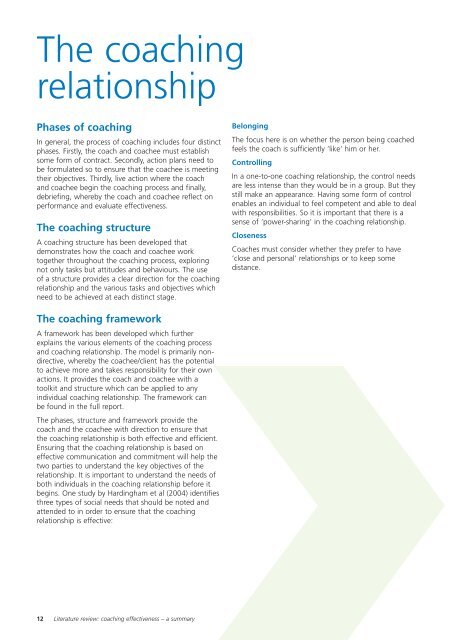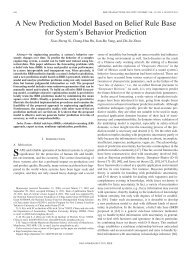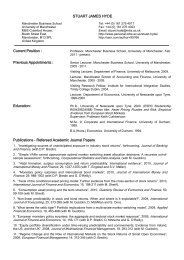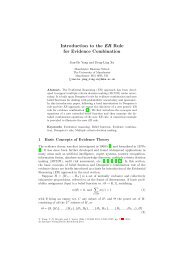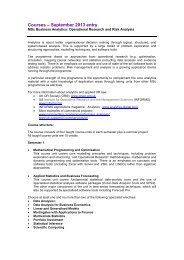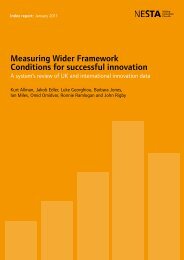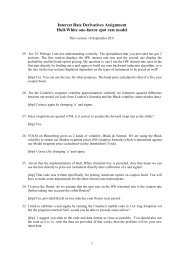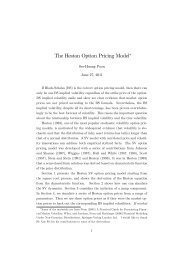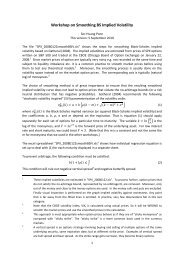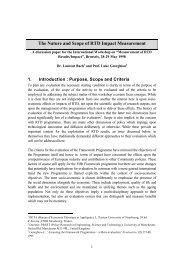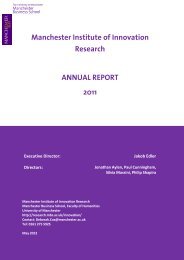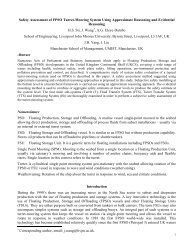Literature review: coaching effectiveness â a summary
Literature review: coaching effectiveness â a summary
Literature review: coaching effectiveness â a summary
Create successful ePaper yourself
Turn your PDF publications into a flip-book with our unique Google optimized e-Paper software.
The <strong>coaching</strong><br />
relationship<br />
Phases of <strong>coaching</strong><br />
In general, the process of <strong>coaching</strong> includes four distinct<br />
phases. Firstly, the coach and coachee must establish<br />
some form of contract. Secondly, action plans need to<br />
be formulated so to ensure that the coachee is meeting<br />
their objectives. Thirdly, live action where the coach<br />
and coachee begin the <strong>coaching</strong> process and finally,<br />
debriefing, whereby the coach and coachee reflect on<br />
performance and evaluate <strong>effectiveness</strong>.<br />
The <strong>coaching</strong> structure<br />
A <strong>coaching</strong> structure has been developed that<br />
demonstrates how the coach and coachee work<br />
together throughout the <strong>coaching</strong> process, exploring<br />
not only tasks but attitudes and behaviours. The use<br />
of a structure provides a clear direction for the <strong>coaching</strong><br />
relationship and the various tasks and objectives which<br />
need to be achieved at each distinct stage.<br />
Belonging<br />
The focus here is on whether the person being coached<br />
feels the coach is sufficiently ‘like’ him or her.<br />
Controlling<br />
In a one-to-one <strong>coaching</strong> relationship, the control needs<br />
are less intense than they would be in a group. But they<br />
still make an appearance. Having some form of control<br />
enables an individual to feel competent and able to deal<br />
with responsibilities. So it is important that there is a<br />
sense of ‘power-sharing’ in the <strong>coaching</strong> relationship.<br />
Closeness<br />
Coaches must consider whether they prefer to have<br />
‘close and personal’ relationships or to keep some<br />
distance.<br />
The <strong>coaching</strong> framework<br />
A framework has been developed which further<br />
explains the various elements of the <strong>coaching</strong> process<br />
and <strong>coaching</strong> relationship. The model is primarily nondirective,<br />
whereby the coachee/client has the potential<br />
to achieve more and takes responsibility for their own<br />
actions. It provides the coach and coachee with a<br />
toolkit and structure which can be applied to any<br />
individual <strong>coaching</strong> relationship. The framework can<br />
be found in the full report.<br />
The phases, structure and framework provide the<br />
coach and the coachee with direction to ensure that<br />
the <strong>coaching</strong> relationship is both effective and efficient.<br />
Ensuring that the <strong>coaching</strong> relationship is based on<br />
effective communication and commitment will help the<br />
two parties to understand the key objectives of the<br />
relationship. It is important to understand the needs of<br />
both individuals in the <strong>coaching</strong> relationship before it<br />
begins. One study by Hardingham et al (2004) identifies<br />
three types of social needs that should be noted and<br />
attended to in order to ensure that the <strong>coaching</strong><br />
relationship is effective:<br />
12 <strong>Literature</strong> <strong>review</strong>: <strong>coaching</strong> <strong>effectiveness</strong> – a <strong>summary</strong>


